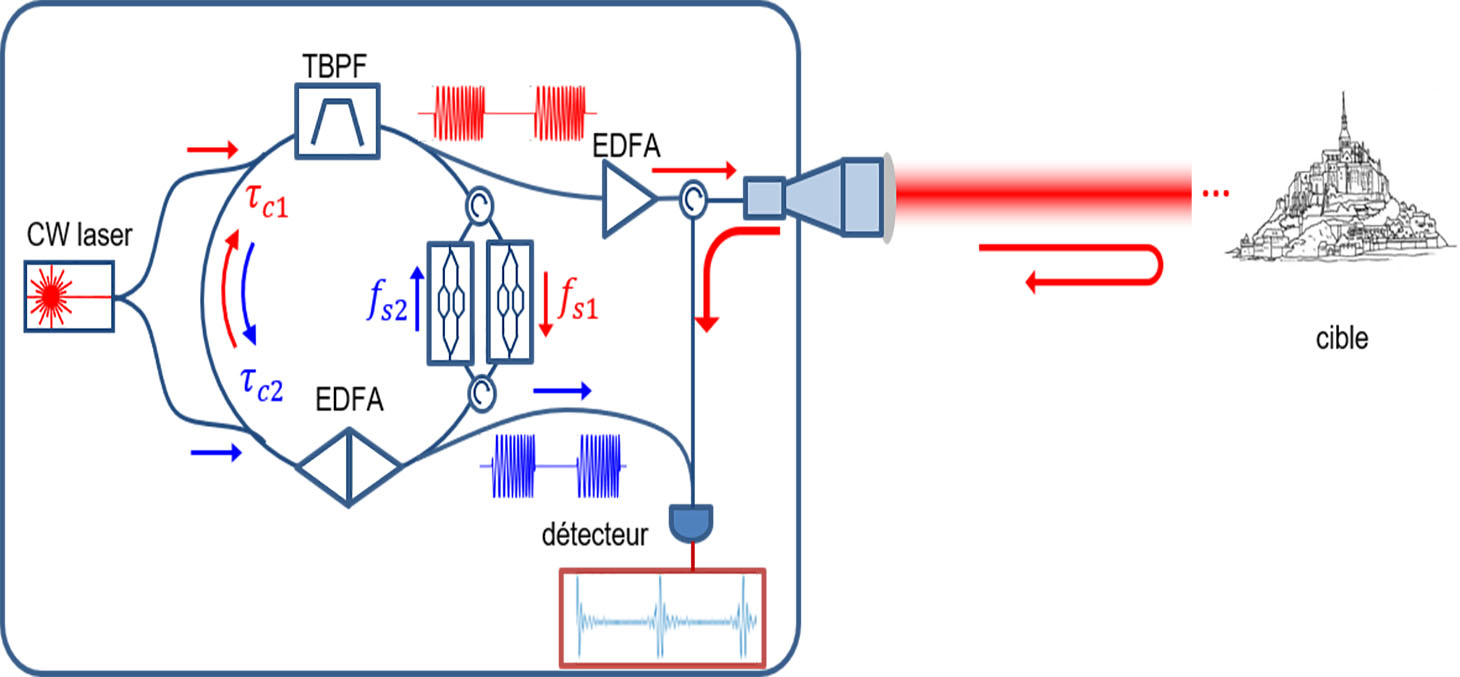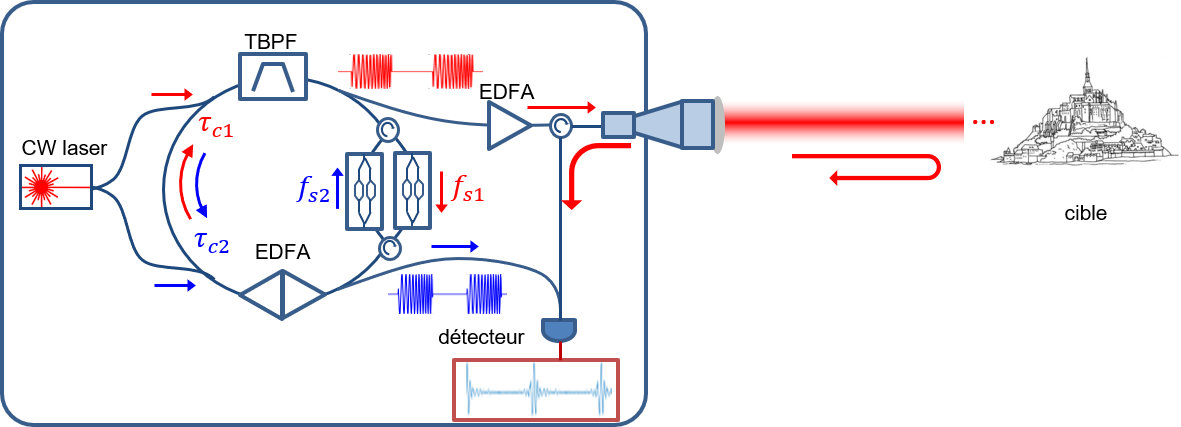- Share
- Share on Facebook
- Share on X
- Share on LinkedIn
Recruitment

This thesis work is part of the ANR COCOA project (Coherent Lidar with all-optical analog pulse compression). This project brings together two academic partners: the LIPhy (Interdisciplinary Physics Laboratory) in Saint Martin d'Hères, and the FOTON Institute (Optical Functions for Information Technologies) in Rennes. Lumibird, an important industrial company in the photonics sector, has also lent its support to the project.
Description of the subject :
The objective of the COCOA project is to develop new architectures for coherent all-optical pulse compression lidar. Such architectures can be described as optimal. They combine many advantages, both in terms of performance (long range thanks to the use of quasi-continuous signals, sub-centimetric resolution governed by the spectral width of the signals, possibility of phase or velocity measurements, high signal-to-noise ratio thanks to pulse compression), simplicity (operation at 1550 nm, no fast electronics, no wide-band laser source), and flexibility. One of the envisaged architectures, which will be developed at LIPhy, is a double frequency shift loop using electro-optical frequency shifters (or single sideband Mach Zehnder modulators). The application of this system to telemetry should make it possible to obtain very easily adjustable spatial resolutions, from the cm to the hundred µm.
This thesis work will also allow to highlight new applications of frequency shift loops for metrology or information processing.

Keywords :
Telemetry, Coherent Lidar, Frequency combs, Multi-heterodyne interferometry (dual-comb), Pulse compression, Matched filtering, Hilbert transform.
Thesis work and required skills:
The thesis work is primarily experimental. The aim is to realize and characterize a double fiber loop with electro-optical frequency shift, then to optimize it in order to realize a demonstration of Lidar telemetry. The thesis also includes a more theoretical component (modeling and numerical simulations) aimed at understanding the fundamental limits of the system (resolution, SNR, dynamic range ...). Finally, an interface will be developed on a Labview platform to control, process and format the telemetry measurements. We are looking for a candidate (M/F) with strong skills in optics. Skills in signal processing, electronics, computer science and telecommunications will also be appreciated.
Contact
Hugues GUILLET DE CHATELLUS
Office 027
Tel: 04 76 51 43 41
hugues.guilletdechatellus univ-grenoble-alpes.fr (hugues[dot]guilletdechatellus[at]univ-grenoble-alpes[dot]fr)
univ-grenoble-alpes.fr (hugues[dot]guilletdechatellus[at]univ-grenoble-alpes[dot]fr)
- Share
- Share on Facebook
- Share on X
- Share on LinkedIn